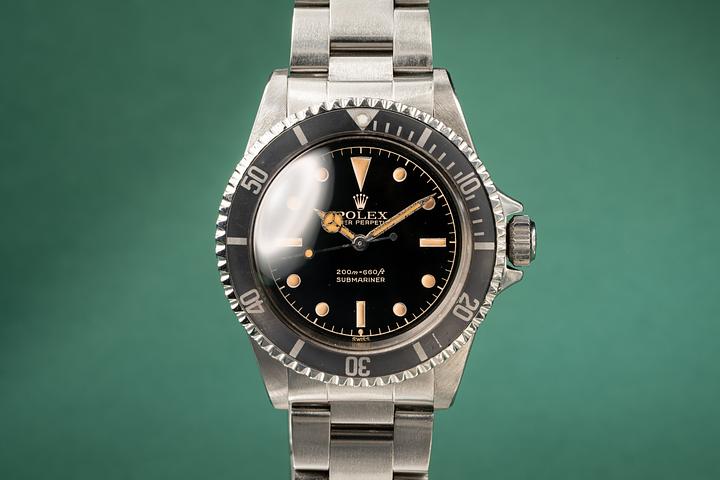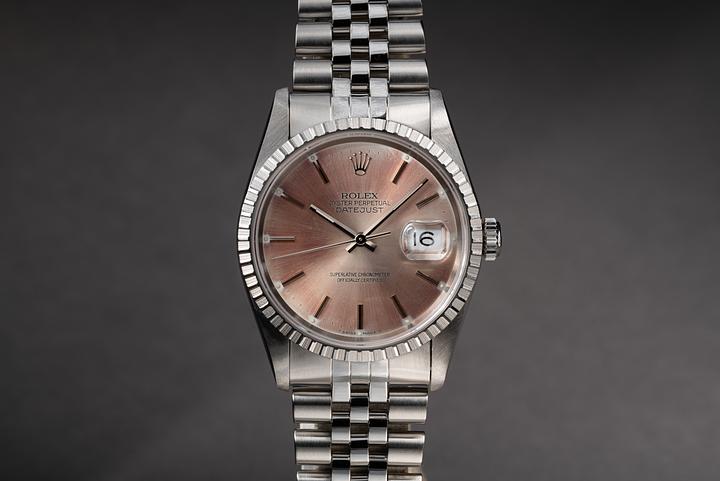How to Set the Time on a Rolex Without Messing It Up

How to Change the Time on a Rolex: A Swiss Legacy of Precision and Ease
There's this moment—you look down at your wrist, your Rolex catching a streak of sunlight, and you realize the time is off. Maybe you crossed time zones, or maybe daylight savings snuck up on you. Whatever the reason, you’re holding a piece of horological royalty, and you want to adjust it correctly. Whether you're rocking a classic Datejust, a rugged Submariner, or the unmistakable GMT-Master II, the process of setting the time on your Rolex is rooted in decades of technical mastery and Swiss dedication to flawless function. So, yeah. Let’s get into what makes Rolex so compelling in the first place—and how to confidently change the time, so you’re back in sync and still looking good.
Understanding the Rolex Crown and Caliber Movement
First things first, it helps to understand what exactly is going on inside your watch. When we talk about “changing the time,” we’re interacting with something far more advanced than a digital clock on your oven. Rolex watches house mechanical movements, powered by intricate gears and springs that store and regulate energy. This is where the crown—the small, ridged knob on the side of your Rolex—comes into play. The crown isn't just a functional piece; it's essentially your communication line to the heart of your watch. By pulling, turning, or screwing it in various ways, you interact with the movement that Rolex calls a “caliber.” And I mean, Rolex doesn’t mess around when it names things.
Know Your Model: Different Rolex Watches, Different Functions
This part is critical. Not all Rolex watches function the same way when it comes to setting the time. Some have only the time function (think Oyster Perpetual or Explorer). Others include a date feature (like the Datejust or Submariner Date). GMT models like the GMT-Master II have an additional 24-hour hand that tracks a second time zone. So before diving in, you need to identify your model. Flip the watch over—no, wait, Rolex case backs are generally solid with zero info. Right. So instead, the reference number is engraved on the watch between the lugs at the 12 o'clock position (if you're feeling adventurous and have a fine cloth nearby to prevent scratches, check it yourself). Once you know what you're working with, adjusting it becomes way easier.
Step-by-Step: How to Change the Time on a Rolex Without a Fuss
Okay, assuming you know which model you're dealing with, here’s a general guideline to follow. First, unscrew the crown counterclockwise until it pops into the winding position. This is your safe space—no harm done yet. From here, gently pull the crown out to the second or third position, depending on your watch. For most non-GMT Rolex watches, pulling the crown out to the final position stops the second hand. That’s called the “hacking” position, by the way—super useful if you’re syncing your watch to the second. Now, slowly rotate the crown to adjust the hour and minute hands. Turn it clockwise or counterclockwise, there’s no wrong way—you’re not breaking anything.
If your Rolex has a date feature, here's something important: never change the date during what's called the “danger zone”—roughly 8 PM to 4 AM—because the date-changing gears are engaged, and altering them during this window could damage the mechanism. If you need to move past midnight to get to the right time in the AM or PM, move the hands slowly and keep tabs on the date change. All done? Carefully push the crown back in and, super important, screw it down clockwise until it’s secure. Rolex crowns are part of their legendary waterproof seal, the Oyster case, so tightening it snugly ensures you're keeping the whole system protected. Don’t just twist it lazily—you want it flush.
How the Swiss Made It This Effortless
Rolex isn’t just a watch brand. It's basically the steel spine of the modern Swiss watch industry. The brand pioneered many innovations that now seem ubiquitous. Take the Oyster case, released in 1926—it was the world’s first waterproof wristwatch case. Then in 1931, Rolex introduced the Perpetual rotor, the automatic winding mechanism powered by wrist movement. The way you set the time on a Rolex today is a direct descendant of those twin revolutions. The crown mechanism, with its multiple detents (or settings), has been refined through decades of engineering. The real magic? You never need to open the case back to perform time adjustments, which maintains the integrity of the waterproof seal and places all control at your fingertips. Or well, your thumb and forefinger.
GMT Watches: Managing More Than Just Time
Let’s circle back to one of Rolex's most practical icons—the GMT-Master II. Originally developed for Pan-Am pilots in the jet age, these timepieces let wearers simultaneously track two, sometimes even three, time zones. Changing the time on a GMT Rolex involves a slightly more layered process. Once you unscrew and pull out the crown, you’ll notice that the hour hand can be adjusted independently in the second crown position—without stopping the minute or second hands. It’s brilliant and surprisingly smooth. Rotate the crown and the hour hand jumps in one-hour increments. That means you can adjust for daylight savings or a new time zone without interfering with the core timekeeping or the 24-hour GMT hand. The final crown position then lets you adjust the minutes and that second-time-zone hand, should you want to change your home time entirely. It’s modular, intuitive, and—here’s that word again—effortless.
The Final Word: Timelessly Simple, Endlessly Reliable
Changing the time on a Rolex isn’t a chore—it’s a ritual. And like most rituals involving something as craft-intensive as a Swiss automatic movement, it’s worth understanding before diving in. Whether you’re recalibrating your Submariner before a dive trip, adjusting the Datejust for daylight savings, or syncing your GMT-Master before a transatlantic flight, the process is designed to connect you with the precision inside the case. Take a minute, maybe two. Twist the crown, feel the finely machined gears engage, and just like that, you're back on schedule. It’s deliberate, it’s clever, and really, it’s peak Rolex.




